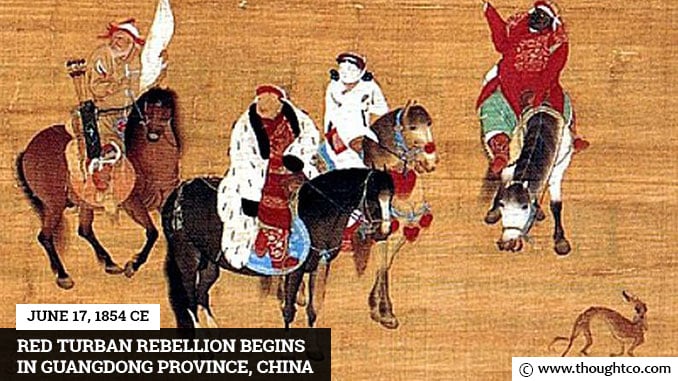As the spring months came to a close, the sun just began to ascend into the Chinese sky on the morning of June 17, 1854. On that day, in a tiny town about 75 miles west of Hong Kong called Taishan, a war between rival clans broke out that would result in over a million deaths over the next twelve years. The roots of the conflict date back nearly 200 years, when the Qing Dynasty usurped the throne of China from the Ming royal family. Loyalists to the overthrown king, displaced to Taiwan, immediately began to plot a coup of their own to restore control to the Ming line. Unsettled by the possibility, Kangxi, the Qing Emperor, ordered residents of the coastal provinces of Guangdong and Fujian to move a little more than 15 miles in from the sea. At the time, the Punti (known to us today by their native language, Cantonese) inhabited the area. In the transition between their seaside home and new territory in the mountains during 1661 and 1662, a large percentage of the clan died. Seven years later, when the declarations were nullified, less than 1700 of the Punti returned. Desperate to see the area brimming with people once again, Emperor Kangxi provided incentives for new settlement. The Hakka soon arrived from central China to take advantage of the offer and, for nearly two centuries, the Punti coexisted with them. In the middle of the 19th century, as the number of residents in Guangdong began to test the limits of the land, conflict ensued. In neighboring Guangxi Province, the Taiping Rebellion had erupted in 1851. The violence soon slowly spread to Guangdong, as the Punti and Hakka took turns burning each others villages, instigated by an anti-Qing faction interested in bringing down the emperor. The fighting, though considered part of a large-scale war between the Qing Dynasty and the Heaven and Earth Society in Guangxi, was primarily along lines of ancestry – the imperial-backed Hakka raiding the rebellious Punti and vice versa. Fires raged in small towns along the countryside as roads and bridges were destroyed. The armies, often consisting of merely the men in the area strong enough to hold a shield and sword, took no mercy on prisoners. Hundreds of thousands were captured, with some being sold into slavery – ending up as far away as South America and the Caribbean, in some cases – and others receiving far less savory treatment. Though this “Red Turban Rebellion” essentially came to an end in 1857 – more than a million people had died in just three years – skirmishes continued periodically until the Qing armies suppressed the Taiping Rebellion completely in 1867. Imperial armies were soon turned toward Guangdong. The government, fed up with the Punti-Hakka infighting, divided the rival clans with a decree: some Hakka would receive their own sub-prefecture, Chixi, on the southeastern corner of Taishan. The remainder were taken to Guangxi Province to join the larger Hakka population there. The enormous death toll, horrifying in its own right, is only a drop in the bucket: with more than 20 million dead overall, it is part of one of the bloodiest wars in all of human history.
June 17, 1854 CE – Red Turban Rebellion begins in Guangdong Province, China
As the spring months came to a close, the sun just began to ascend into the Chinese sky on the morning of June 17, 1854. On that day, in a…
